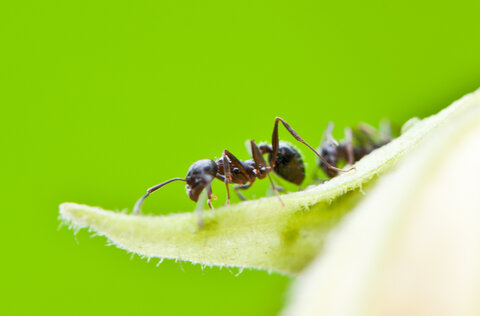How do I stop ants eating the catch?

Within a few hours of erecting a trap, ants will find their way into the trap cage and remove or eat any flies held there. This is usually evident by observing the ants themselves, but sometimes the only proof of ant attack are the wings left after the ants have taken the other parts of the body.
The problem gets worse once the trap has been in position for a few days, when the ants seem to have become used to the fact that the traps provide a regular feast. So, unless special efforts are taken to stop the ants, the numbers of flies found in a trap can decline sharply. A declining catch in a monitoring trap may indicate a successful control operation – or that ants are eating all the flies! How can we stop this?
Solutions
Sticky bands. Some people put grease or other sticky material around the supporting poles of the trap, or even on the lower cloth components, as a barrier to ant invasion. However, this is messy, and before long the grease can gets on other parts of the trap. Moreover, before long the grease becomes covered in dust, so that ants can walk over it. Often wind-blown leaves lodge at the trap's base, forming ladders to by-pass the sticky deposit. If you do use this approach you need to re-apply the grease regularly and be prepared to clean it from the trap and your clothes!
Insecticide. Another solution is to put a few drops of insecticide in the trap cages -- the pyrethroid used for the cattle or targets will do. These pyrethroids are not repellent, and quickly kill any ants (and tsetse) that get into the cage. Be wary of using other insecticides that are highly volatile, such as dichlorvos. Such insecticides can be repellent. This method is not suitable if you want to keep tsetse alive for research purposes, such as dissecting them to identify trypanosomes.